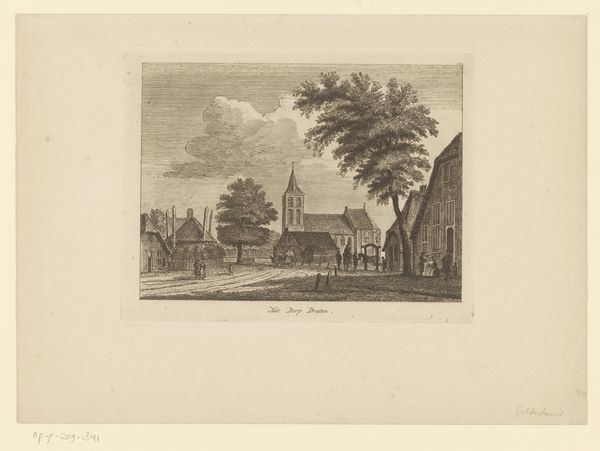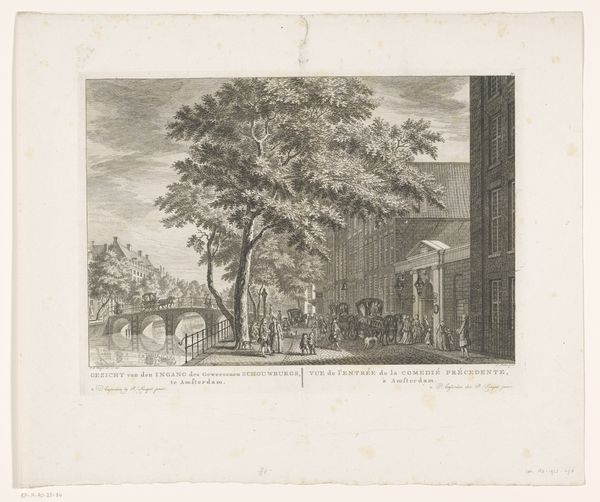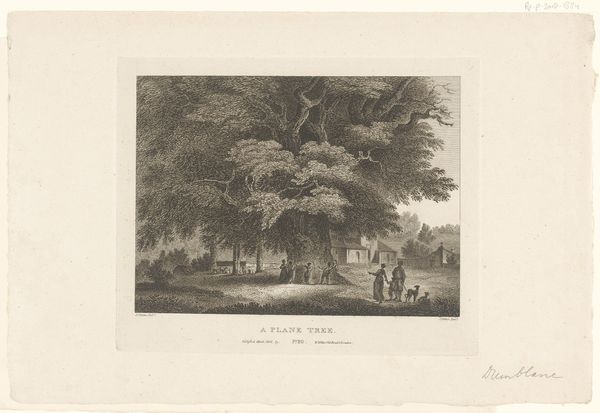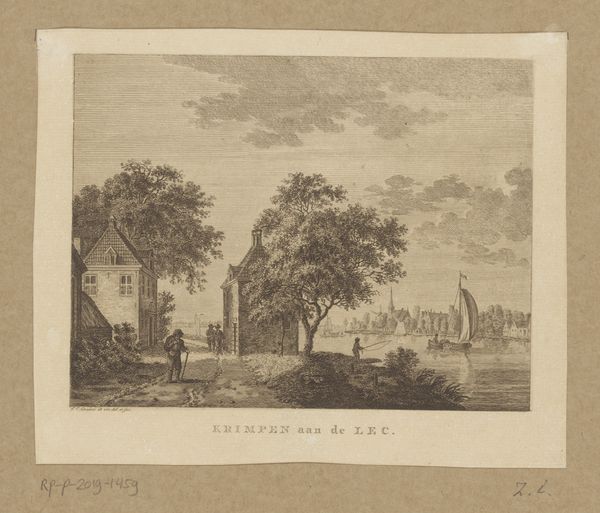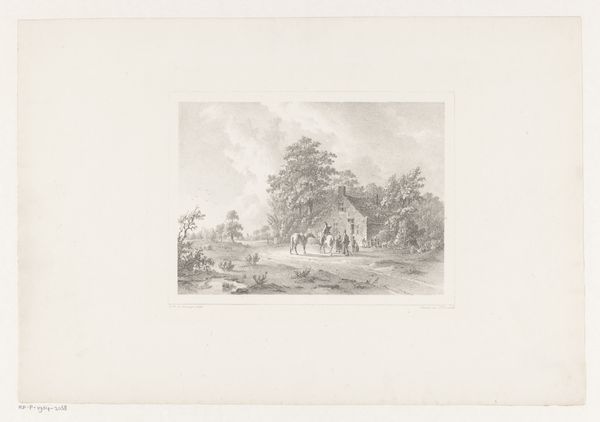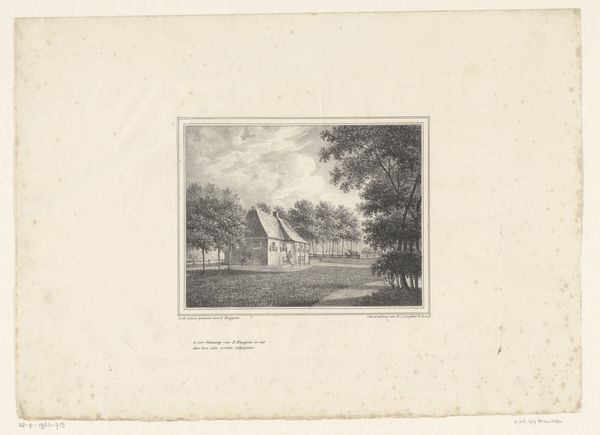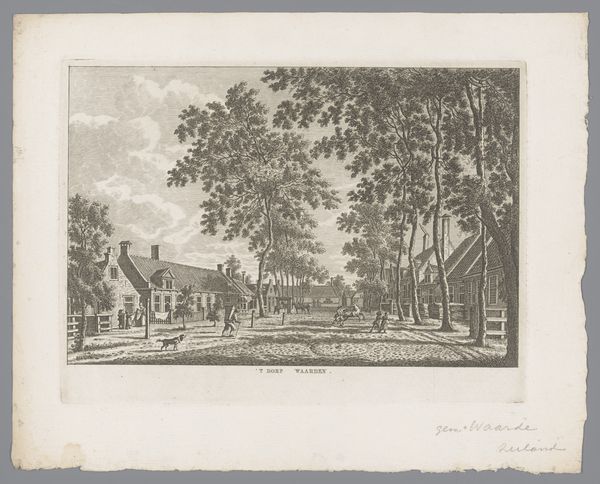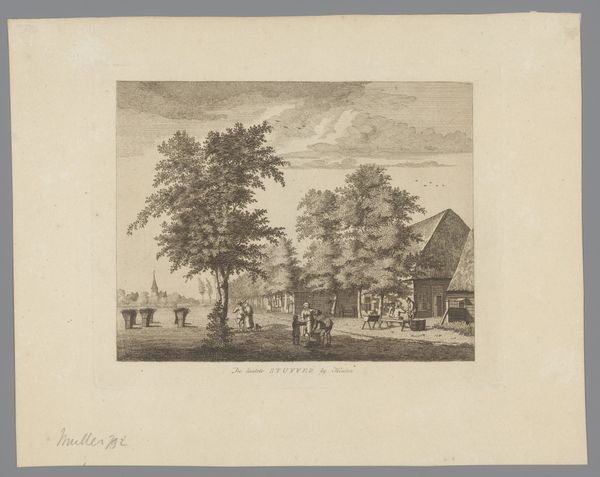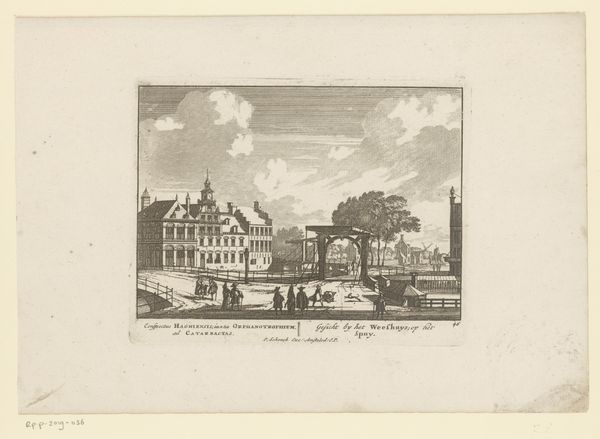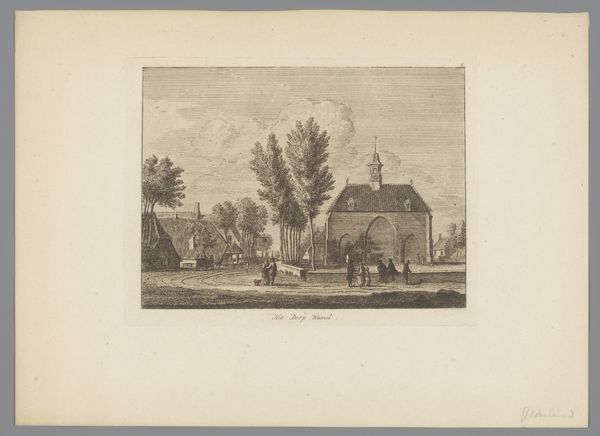
Dimensions: height 160 mm, width 212 mm
Copyright: Rijks Museum: Open Domain
Editor: This is "Dorpsgezicht in Deest," or "Village View in Deest," an engraving dating from around 1770 to 1800, currently at the Rijksmuseum. It's so delicate and intricate. It's interesting how such a simple scene has so much going on. What do you see in this piece? Curator: I see a powerful assertion of the local and the everyday at a time of profound social upheaval. Think about the late 18th century; revolutionary sentiments were brewing. Yet, here, we have an artist choosing to depict the quietude of rural life. How might this choice represent a commentary on larger power structures, or perhaps a yearning for stability amidst chaos? Editor: That's a fascinating way to frame it. I was mainly focused on the kind of idyllic charm of it. Curator: Consider the artistic choices within a socioeconomic context. Genre painting like this often served a specific purpose for a rising middle class, didn't it? Editor: I guess so. It allowed them to see idealized versions of everyday life and imagine the possibility of leisure time... Curator: Exactly! And even celebrate what they owned and stood for, at the expense of the working classes... so, think about the narratives it reinforces or obscures. How might the very act of depicting this scene contribute to the invisibility of certain realities, especially for the farmers that surely worked that land? Editor: That’s definitely something to consider. I never looked at it from this angle. This artwork now seems less straightforward than I initially thought! Curator: Precisely. The most unassuming images can offer complex commentary, especially when we examine them through lenses of power, representation, and historical context.
Comments
No comments
Be the first to comment and join the conversation on the ultimate creative platform.
